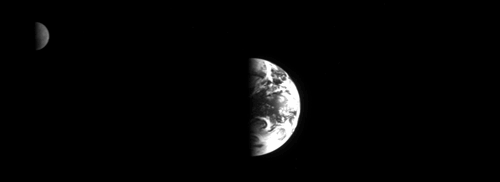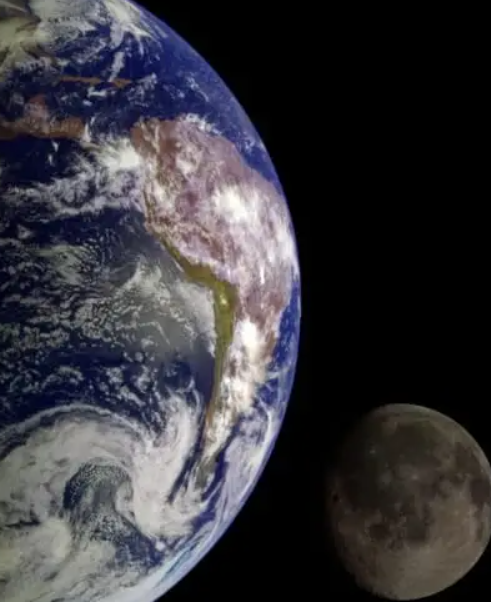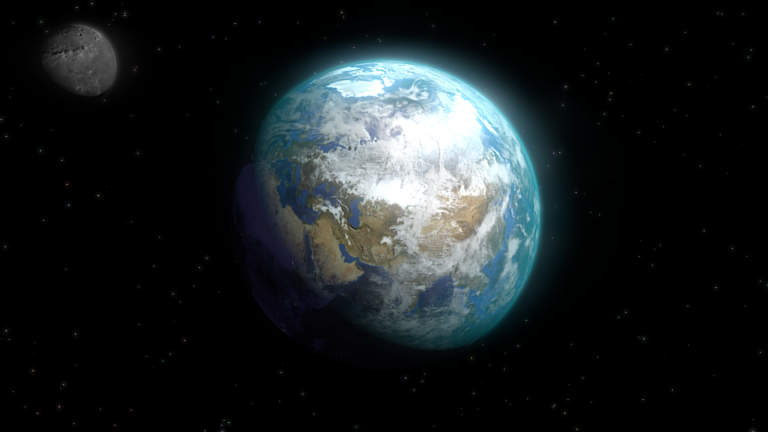Earth’s Days Are Growing Longer as the Moon Gradually Drifts Away
So since the moon is moving away from the Earth, it’s not a coincidence that the moon appears the same size as the sun, the coincidence is that we happen to live during this time to see such a thing.
These geoscientists have explained that Earth has been gaining more than two milliseconds per century due to the Moon’s slow movement away from the planet. Around 1. We owe this knowledge to a new geological clock, which reveals that 4 billion years ago an Earth day was 18 hours, 17. Furthermore, Dr Leonid Nilov of Imperial College London explains that the planet’s core formed just one billion years after the birth of the solar system. This study undertaken using astrochronology method, which combines elements of astronomy as well as the geology, mapped out the historical social relations between the Earth and the Moon. When the distance between the Earth and Moon increases the rotation of the former slows down just as a figure skater slows when stretching arms. This gradual change also alters the climatic behaviour of the Earth through what are known as the Milankovitch cycles which refer to a change in the Earth’s rotation, wobble and orbit which show up in rock layers.
For those hoping for longer days, there’s some good news: It is true that earth days are fast becoming longer.
If we take a look at the history of the planet’s connection with the Moon, then it is possible toestimate that about 1. Evidence shows that 4 billions of years ago that an earth day was about 18 hours and 30 minutes long. This was partly because the moon was closer to the earth and that have an effect in its period of rotation.
As the moon moves further away, the Earth’s rotation slows, just like a figure skater when stretching their extremities, said Stephen Meyers, a geoscience professor at the University of Wisconsin–Madison as part of the study published in the Proceedings of the National Academy of Sciences.

The study provides a new statistical tool named astrochronology which has elements of both astronomical theory and geological data. It allows the scientists to explore the geological past of our planet, study the formation process of the Solar system and climatic shifts that are imprinted in the stone. “One of our objectives was to employ astrochronology for measuring time in the remote past, and constructing extremely ancient geologic time scales,” Meyers concludes. “Our goal is to look at rocks that are billions of years old using methodologies in similar to how one would study current processes in Earth sciences. ”
The Earth has motion in space and that has been as a result of force exerted by other forces like the planets and the Moon. These interactions impact on fluctuations in the Earth’s rotation, its axial motion and its orbit around the Sun.
Known as Milankovitch cycles, these changes affect how sunlight is distributed across the Earth, and accordingly determines Earth’s climate. Other scholars such as Meyers have recorded these climatic fluctuations using Isotopes of rocks dated for several hundreds of millions of years.
But carrying out such cycles back to billions years in prehistory is compounded by the inadequacy problems of conventional geochronological techniques, including radiometric dating, in terms of resolution. Besides, there are unknown facts concerning the history of the Moon more and the theory of chaos in the solar system developed by the French astronomer Jacques Laskar in 1989.

Due to intricate inter-connectedness of various planets in the solar systems and mutual influences, that what begins as a small change can amplified over millions of years which is defined as solar system chaos. To trace back all these effects and reconstruct them in their previous stages of development, this is as hard as it is to reverse Butterfly effect.
“As the Moon gets away, Earth will act like a spinning figure soccer who gradually come to a halt as he stretches out his frame,” they opined.
Last year, Meyers and his team have deepened our knowledge of this disordered system by analysing sediments of the 90 million-old rock formation that documented climate fluctuations on Earth. As for detailed findings, their credibility progressively declines the deeper in the rock record they go.
For instance and according to astronauts, the Moon is now moving away from the Earth at a rate of 3. 82 centimeters per year. When this rate was worked backwards, researchers determined that for more than one trillion years organisms on the planet were feeding on other organisms, or consuming heterotrophically. Around 5 billion years ago the moon would have been at a distance in which tidal forces would have caused the splitting of the celestial body. Still, it is amazing that the Moon is known to be 4. 5 billion years old.
One member of the audience present at the presentation was Alberto Malinverno, a Lamont Research Professor at Columbia University, who came up with an innovation. “I was sitting there thinking, ‘I think I know how to solve this!’” Malinverno, who co-authored the paper, said. “It was thrilling because, in some ways, they took me in as the solution in search of the problem. ”
Concerning the geophysical history, the Milton Keynes firm needed a better way of tracking the prior houses of celestial bodies and the effects they caused on the Earth and its Milankovitch cycles to Meyers. He addressed this concern in the talk he was keen to give during his stand at Columbia University’s Lamont-Doherty Earth Observatory in 2016.
That is, Meyers and Malinverno joined to merge Meyers’ 2015 statistic method, TimeOpt that accounts for temporal errors, with astronomical theory and geologic data and a sophisticated statistic method call Bayesian inversion. This integration helped them to address a number of issues regarding uncertainty of their study.
Their new method, called TimeOptMCMC, was applied to two sets of stratigraphic rock layers: the 1. a 4-billion-year-old formation located in Xiamaling of Northern China and a 55-million-year-old record obtained from Walvis Ridge, in the southern Atlantic Ocean.
Such an approach allowed them to accurately assess fluctuations in the Earth’s rotation axis and orbit as retained in rock strata both in the recent and great geological past and also incorporate uncertainties. Due to it, they were able to find out the length of the day and the distance from the Earth to the Moon.
“About the future we hope to expand our study to other geologic time slices,” added Malinverno. “It was exciting because in essence, it was like having a product looking for a market in which to sell it. ”
The study is based on two latest studies dealing with rocks and their records with the help of Milankovitch cycles to give new insights about the Earth. He also consulted one team at Lamont-Doherty to verify whether the oscillations of the Earth’s orbit occur within the 405 000-year cycle using the rock formation in the Arizona. Another team in New Zealand, working with Meyers, studied the impacts of the Earth orbit and axil rotation on the growth and extinction of graptoloids – the sea organisms during the last 450 million years.
“Early solar system can, therefore, be viewed as an astronomical observatory within the geologic record according to Meyers,” says Meyers. “We are studying its time signatures that remain in rock and through the history of life. ”
The work reported in this study was supported by National Science Foundation grant number EAR-1151438.
Do not forget to share your opinion with us to provide you with the best posts !




0 Comments